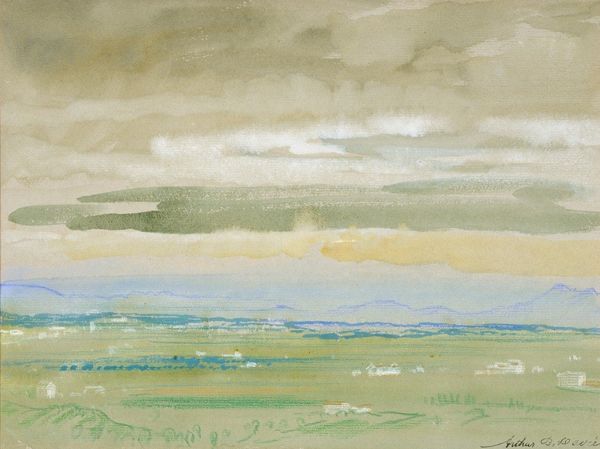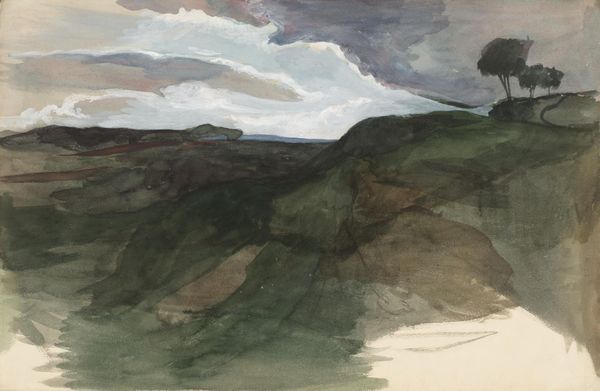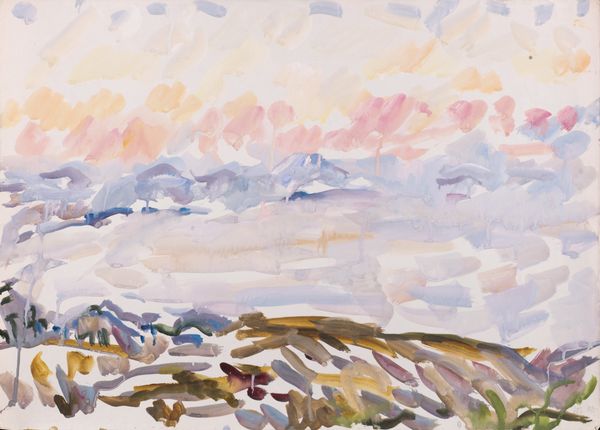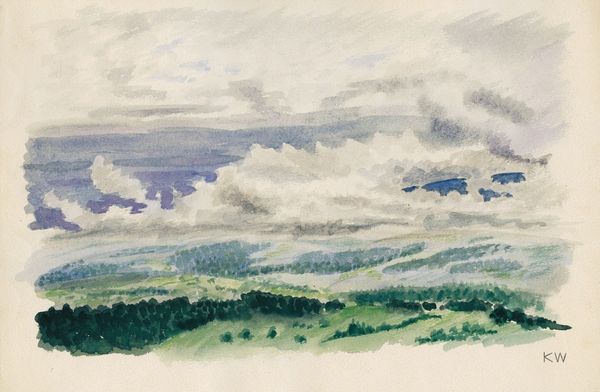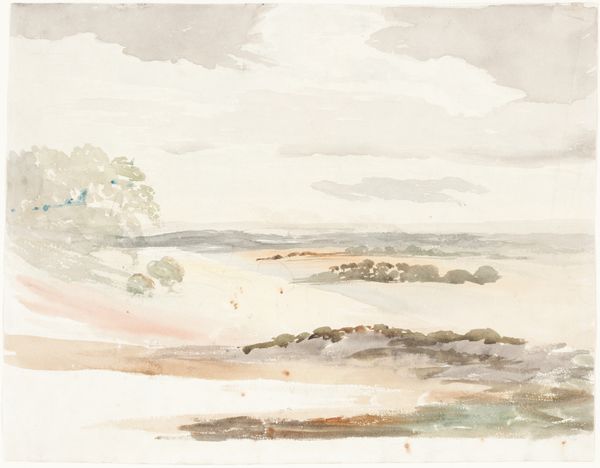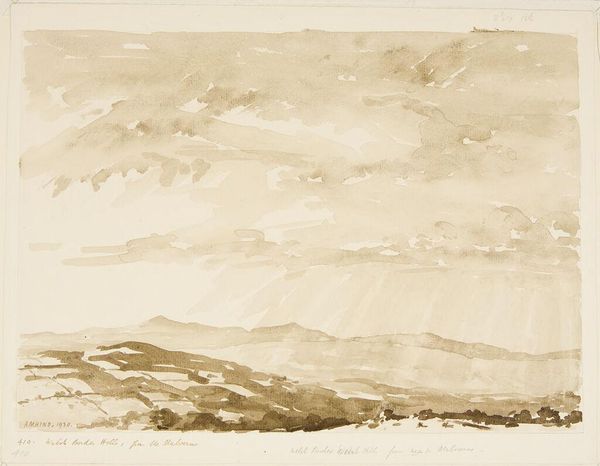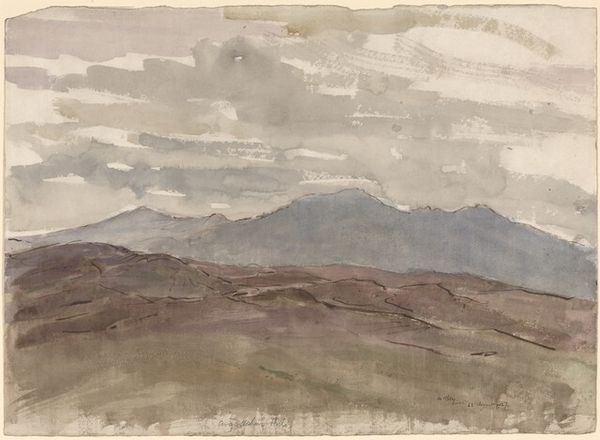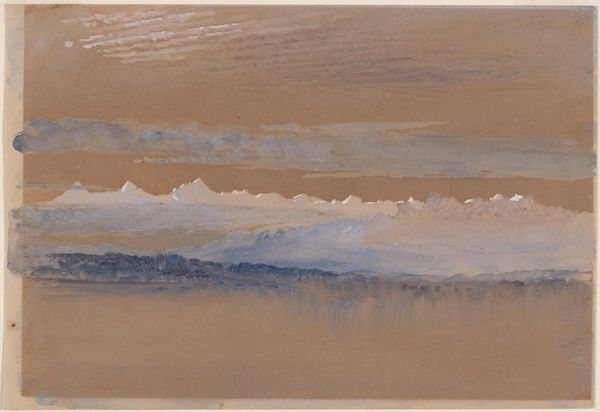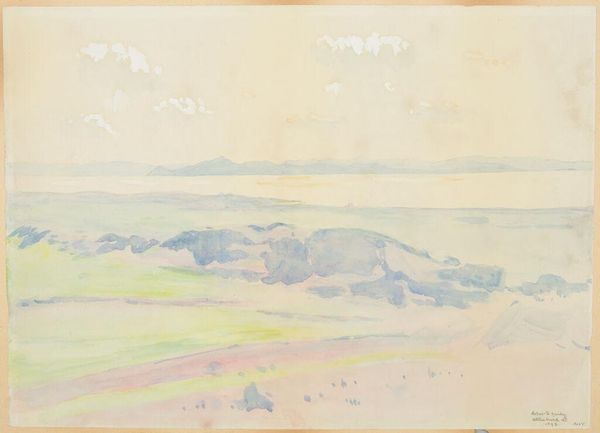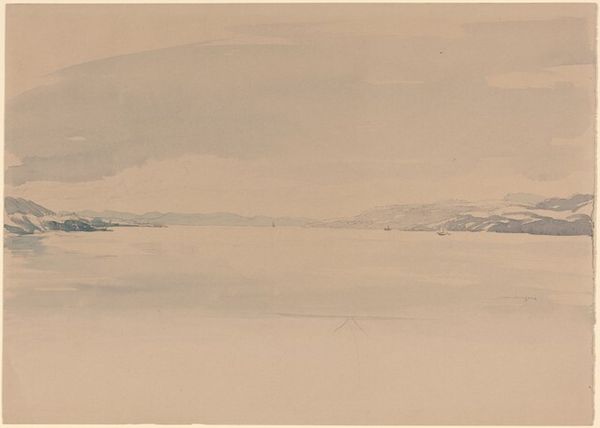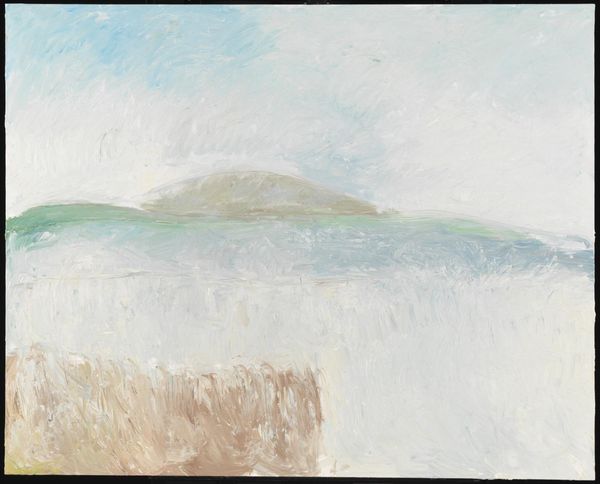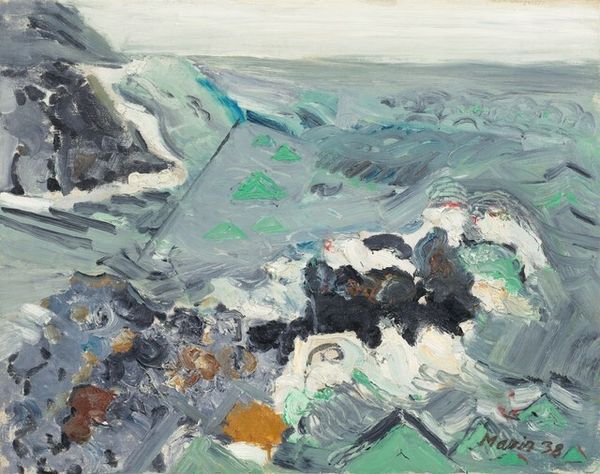
Copyright: Public Domain: Artvee
Curator: Winslow Homer's watercolor "Ocean Seen from a Cliff, Prout’s Neck, Maine," painted in 1894, offers a starkly beautiful depiction of the New England coastline. Editor: Immediately, I’m struck by the raw, almost bleak mood of the piece. The subdued palette of grays and whites captures the relentless power of the ocean and land locked in each other's presence. Curator: Indeed, and I think Homer's choice of watercolor is so significant. It's not just the visual effect. We need to think about the physical process of painting en plein air. What were the environmental conditions as he made this, balancing material instability to the unpredictable weather of the site? Editor: It is about documenting time, too, and the constant negotiation between vulnerability and the sublime that marked American identity at the turn of the century. Homer here is capturing something about cultural negotiation and gendered identity tied to the landscape. Curator: That’s an interesting consideration, thinking about how Homer’s working methods contribute to that understanding, his direct relationship to the material world – the labor of facing this location. This site isn't separate from the watercolor as an object that must endure exposure to similar elemental processes during production. Editor: Absolutely, the watercolor medium feels uniquely suited to capture the transient and ephemeral nature of the scene, mirroring the human position on nature as both destructive and temporary. Curator: There’s also the tradition of seascape painting itself. Was he responding to older landscape and marine subjects? This was originally meant for middle class consumption so Homer made this work affordable at a moment where mass produced artwork began challenging high art making. Editor: Right. This is more than just aesthetic choices, as we dig into the historical and societal values shaping the work's meaning and how the value chains are tied to its materiality. I wonder how Indigenous perspectives might reframe our thinking of preservation and ownership? Curator: Definitely a fruitful area to investigate further. I leave with a feeling that Homer wanted people to know what went into making this picture. Editor: Likewise, the dialogue between vulnerability and raw natural power is really compelling in understanding society.
Comments
No comments
Be the first to comment and join the conversation on the ultimate creative platform.
